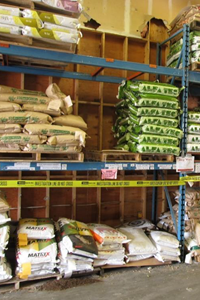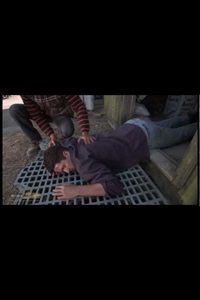Pesticides & fumigants
Pesticides and fumigants can cause mild or severe poisoning. Long-term exposure to them can cause cancer. Workers most commonly absorb pesticides and fumigants through their skin. The chemicals can also be breathed in or swallowed.
- How workers are exposed
- The dangers to workers
- How to reduce the risks
- Resources
How workers are exposed
Four out of five worker claims for injury due to pesticides and fumigants result from skin contact with the chemicals. Swallowing pesticide causes the most severe poisoning.
Here are the common scenarios that lead to pesticide and fumigant exposure:
| Skin contact |
|
| Inhalation |
|
| Ingestion |
|
Workers are most commonly exposed when pesticides and fumigants are in storage and during application. Pesticides are most dangerous in storage because they are highly concentrated. As a result, storage facilities may contain hazardous indoor air conditions.
Workers can also be exposed without knowing it. They could come into contact with pesticides if they are downwind when it is being applied, or the application area is not sealed off. If fumigated areas are not sealed, workers may inhale fumigation gas. Shipping containers can be another source of exposure, since approximately 20 percent of them are fumigated.
The dangers to workers
Pesticide and fumigant poisoning can result from both short- and long-term exposure. Sometimes the full impact of poisoning does not happen right away. When chemicals are absorbed through the skin it can take up to 24 hours for the worker to develop symptoms. These include:
| Mild poisoning (short term) |
|
| Severe poisoning (short term) |
|
| Long-term exposure |
It's important workers do not self-diagnose. Always see a doctor after exposure. If symptoms are severe, go to a hospital for treatment.
How to reduce the risks
Only qualified professionals should mix, load, or apply pesticides. Equipment should be inspected before each use, checking for leaks. Containers or buildings should never be entered if fumigants might be present unless a hazard assessment is conducted. If fumigants are found, workers should leave the area immediately and notify a supervisor.
The best way to reduce the risk of exposure to pesticides and fumigants is to eliminate the source of exposure. If that's not possible, there are other risk controls to use. When choosing risk controls, start by asking the questions in the following steps, listed in order of effectiveness.
-
1
Elimination or substitution
Eliminating the hazard by substituting a safer process or material, where possible, is the most effective control. Some questions to consider:
- Can a less hazardous material be used?
- Can a process that generates less spray or mist be used?
-
2
Engineering controls
Making physical modifications to facilities, equipment, and processes can reduce exposure. Some questions to consider:
- Can cabs be enclosed on tractors used for pulling spray equipment?
- Can a ventilation system be installed in storage facilities?
- Can closed mixing and loading systems be used?
-
3
Administrative controls
Changing work practices and work policies, awareness tools, and training can limit the risk of exposure. Some questions to consider:
- Has an exposure control plan been developed?
- Can warning signs be posted in the work area?
- Can workers be required to inspect containers before entering them?
-
4
Personal protective equipment
This is the least preferred control. It must always be used in addition to at least one other control. Some questions to consider:
- Do workers have the proper respirators, eyewear, gloves, protective clothing, and hearing protection?
- Have workers been fit-tested to ensure respirators are working effectively?
- Has personal protective equipment been verified to ensure it is working properly?
Highlights
- Amendments to Occupational Health and Safety Regulation in effect September 1, 2021 Published on: September 01, 2021


